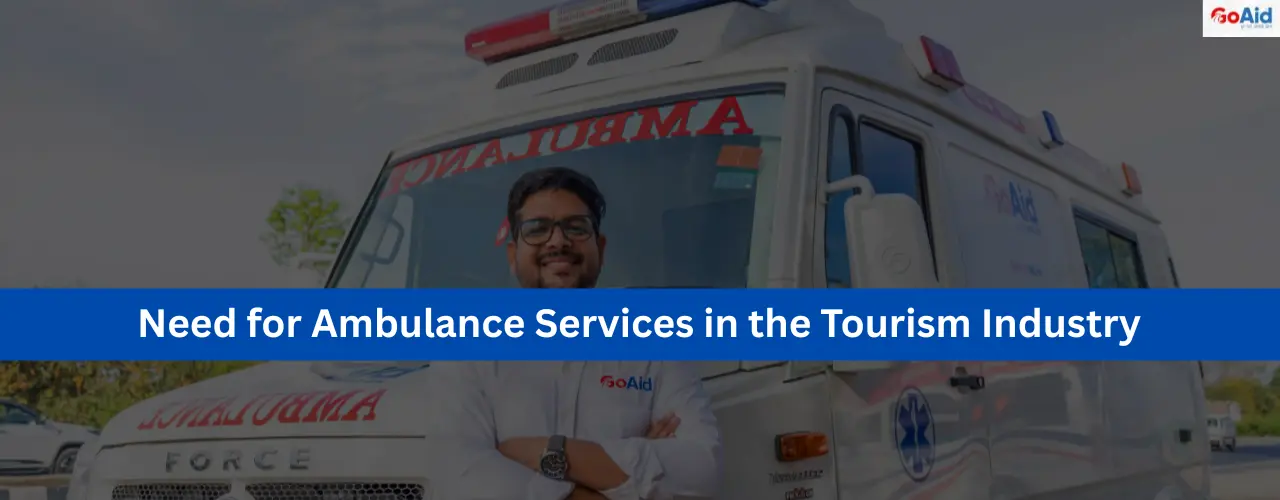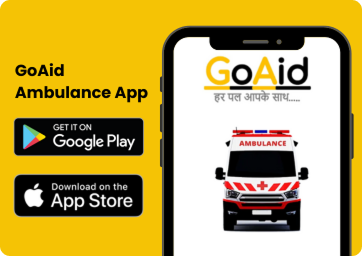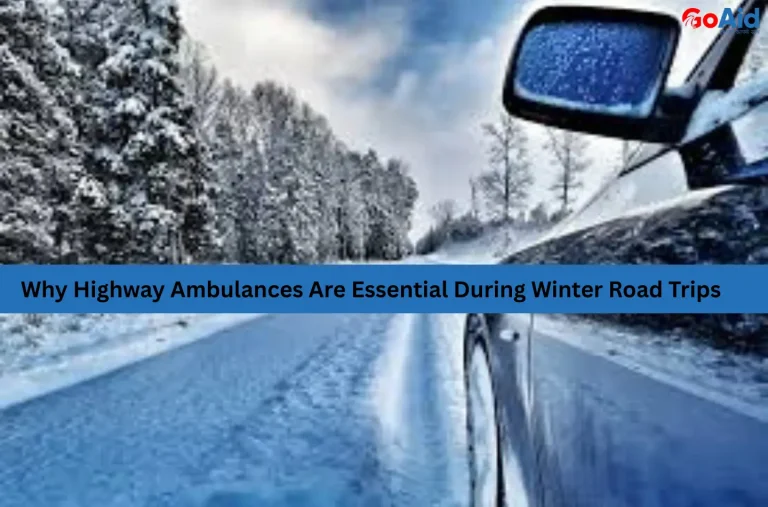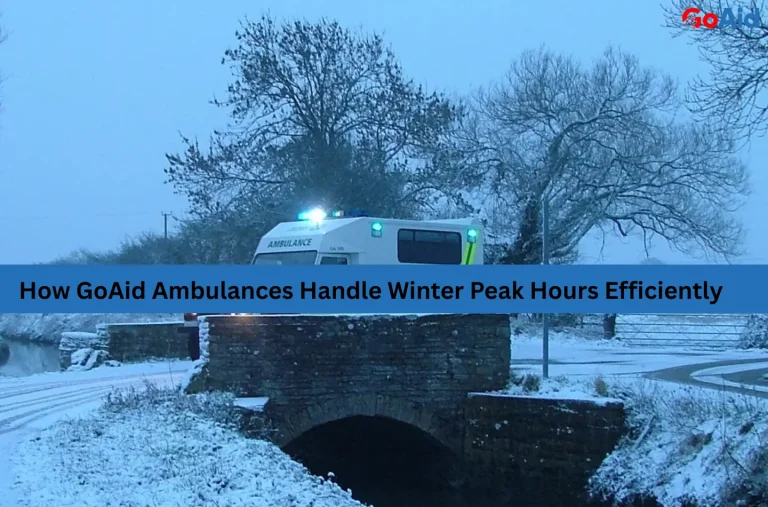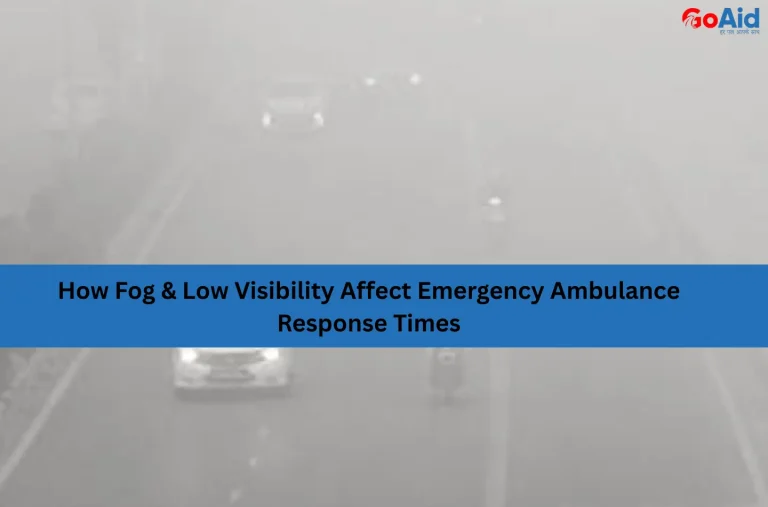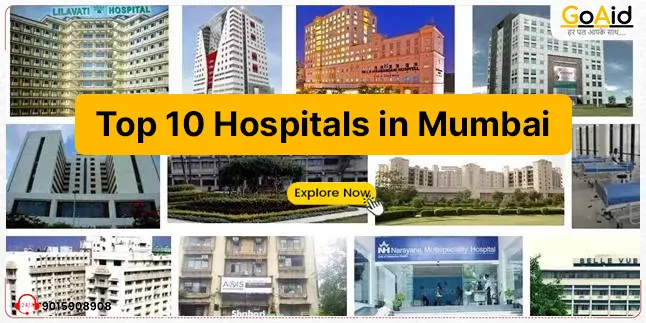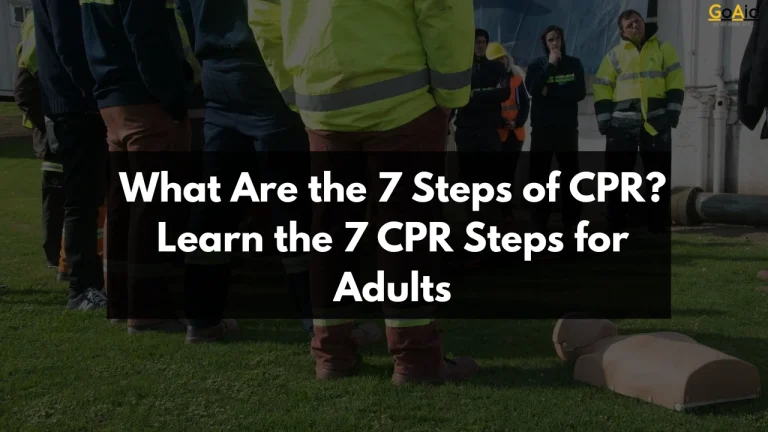In India, tourism attracts millions of people every year. However, some tourist places lack medical support. ThatŌĆÖs why it is essential to have ambulance services. The ambulance service ensures quick medical assistance during a medical emergency.
This blog provides information about why the tourism industry needs ambulances. Current Challenges in Providing Ambulance Services to the Tourism Industry and How These Problems Can Be Solved? Are you excited to read about it? If your answer is Yes, then why wait?
LetŌĆÖs start reading
Common Health & Safety Problems at Tourism Sites
In India, Tourist places often face medical and safety emergencies that require immediate action. These include:
- Heat Stroke and Dehydration: Especially common in summer-heavy tourist areas, lack of hydration or extreme heat can lead to medical emergencies, making on-site ambulance service essential.
- Slip and Fall Injuries: Uneven terrain, old monuments, or crowded staircases can lead to fractures or head injuries requiring ambulance for tourism site.
- Altitude Sickness: Hill stations and mountain tourism sites pose high risks for breathing issues, requiring first aid on the tourism site and oxygen-equipped ambulances.
- Food Poisoning or Allergies: Street food or unregulated eateries often lead to gastric problems or allergic reactions, demanding quick emergency care.
- Wildlife and Insect Bites: Forest areas or nature parks expose tourists to bites or stings, sometimes requiring antivenom through a medical emergency in the tourism industry.
- Cardiac Emergencies: Elderly travelers are prone to heart attacks; having an ambulance in a tourism zone can be life-saving.
Why Ambulance Services Are Essential for the Tourism Industry?
Ambulance services play a key role in preserving life and reputation in tourism. Here’s why:
- Quick Response to Medical Emergencies: Immediate access to an ambulance for tourist safety drastically reduces fatality risks.
- Boosts Tourist Confidence: On-site ambulance service increases the sense of security among both domestic and international travelers.
- Improved Tourism Site Safety: Having trained paramedics and emergency support enhances tourism site safety protocols.
- Reduces Legal and Financial Risks: A prepared emergency response tourism industry lowers the chance of lawsuits and insurance claims.
- Supports Event-Based Tourism: Festivals, fairs, or treks benefit from mobile first aid on the tourism site and ambulance services.
- Government and CSR Compliance: Having a medical emergency in tourism industry facilities ensures adherence to regulatory and CSR standards.
Types of Ambulance Services Might be Required in the Tourism Industry
In the tourism industry, traveler safety is crucial. Various types of ambulance services are essential to handle medical emergencies, from minor injuries to critical care, offering quick and reliable support in unfamiliar locations and high-traffic tourist areas.
- Basic Life Support (BLS) Ambulances: For non-critical patients or first-aid support in low-risk tourism zones.
- Advanced Life Support (ALS) Ambulances: Equipped for critical emergencies like strokes or cardiac arrest in remote sites.
- ICU and Ventilator Ambulances: For high-altitude or long-distance transfers during major medical emergencies.
- Air Ambulances: Used in extreme cases from remote hilly regions to shift patients quickly to metro hospitals.
- Event-Specific Ambulances: This is suitable for tourism events, adventure sports, or large cultural festivals.
Current Challenges in Providing Ambulance Services to the Tourism Industry
In India, ambulance services for tourists come with unique challenges, including language barriers, unfamiliar locations, remote destinations, and a lack of insurance coverage. These issues can delay emergency response and affect the quality of care during medical emergencies in tourism hotspots. Some of the challenges are given below
- Remote Locations: Many tourist sites are in areas with poor connectivity, limiting access to medical emergencies in the tourism industry.
- Lack of Infrastructure: Poor roads or no helipads limit ambulances to tourism sites.
- High Operational Costs: Maintaining an on-site ambulance service 24/7 requires significant investment.
- Untrained Staff: Absence of trained emergency responders affects the quality of emergency care.
- Policy Gaps: No mandatory regulation yet for ambulances in the tourism zone, causing inconsistent preparedness.
- Low Awareness: Tourism operators underestimate the need for an ambulance for tourist safety until a crisis strikes.
How can these problems be solved?
In India, these problems can be solved by introducing a dedicated on-site ambulance service across tourist destinations is the key:
- Public-Private Partnerships: Government and private firms like GoAid can co-invest to ensure ambulance for tourism site.
- Mobile Ambulance Units: Deployment of mobile first aid on tourism site vans equipped for rapid care.
- Local Paramedic Training: Training local youth ensures skilled tourism site emergency care.
- Subsidies & Incentives: Offering tax or CSR incentives for ambulances in tourism zone investments.
- Tourism Policy Integration: Making on-site ambulance service a policy requirement.
- Digital Booking & Tracking: Use tech-enabled systems for immediate emergency response and tourism industry coordination.
Future of Emergency Medical Services in Tourism Industry
The future of medical emergency services in tourism lies in smarter, faster, and more connected systems. With growing awareness and government support, ambulance for tourism sites will be integrated into all major tourism projects. GPS-tracked on-site ambulance service, telemedicine support, drone-aided first aid on tourism sites, and trained emergency teams will redefine tourism site safety.
The emergency response tourism industry will move from reactive to proactive with AI and real-time risk monitoring, ensuring a safer experience for millions of travelers across India.
Labour Welfare and Corporate Social Responsibility for Tourism
Labour welfare and corporate social responsibility (CSR) play a vital role in the tourism industry. They ensure fair treatment, safety, and well-being of workers while promoting ethical practices, sustainable development, and community support in popular tourist destinations.
- Factories Act & Labour Welfare: Promotes tourism site safety through health measures.
- Ministry of Tourism Guidelines: Recommend ambulance at tourism zones for popular destinations.
- Disaster Management Act: Encourages emergency preparedness for tourism site emergency care.
- CSR Mandates for Corporates: Investing in an ambulance for tourist safety as a CSR goal.
- State Tourism Policies: Some states mandate medical emergencies in tourism industry zones.
- Legal Liability Protection: Ambulance service reduces liabilities in tourist injuries or deaths.
How can GoAid be used as a Reliable Partner for Tourism Ambulance Needs?
GoAid Ambulance Service offers dependable, fast, and scalable medical support across tourist zones, making it the ideal on-site ambulance service partner for the tourism industry. Here’s how:
- 10-Minute Response Time: GoAid ensures swift ambulance arrival, critical for any medical emergency in tourism industry settings.
- Coverage in Remote Areas: From forests to hill stations, GoAid delivers ambulances for tourism sites, even in hard-to-reach locations.
- Round-the-Clock Availability: GoAid offers a 24/7 ambulance at the tourism zone with trained paramedics on board.
- Easy Booking Options: You can easily book the GoAid ambulance Service via the GoAid App or by calling 80082-80020 anytime.
- Custom Ambulance Fleet: GoAid provides BLS, ALS, ICU, and mortuary vehicles tailored for emergency response and tourism industry needs.
- Affordable Government-Approved Rates: GoAid offers budget-friendly, approved ambulances for tourist safety services.
- Trained Staff and Helpers: Each vehicle includes trained paramedics, ensuring reliable emergency care.
- CSR and Legal Compliance: GoAid helps tourism operators provide an ambulance at tourism zones under CSR norms.
- Pan-India Reach: GoAidŌĆÖs national presence supports emergency needs at major and emerging tourism zones.
- Event-Specific Ambulance Services: Whether it’s a cultural fest or adventure trek, GoAid offers first aid on tourism sites and event-ready ambulance support.
Also read: Difference between BLS Ambulance and ALS Ambulance
Case Studies/Examples (Adani, Tata, Knight Frank)
Adani Group: During the site development of Adani ports and eco-tourism projects, an ambulance for the tourism site was ensured through private partnerships like GoAid to meet CSR norms.
Tata Tea Tourism (Assam): Implemented on-site ambulance service across their tea garden-based tourism experience, ensuring tourism site safety in remote hilly regions.
Conclusion on the Need for Ambulance Services in the Tourism Industry
IndiaŌĆÖs tourism industry must evolve beyond attraction and hospitality. Health and safety are foundational to long-term sustainability. With increasing travel to remote or high-risk zones, the role of ambulances for tourism sites cannot be overlooked. On-site ambulance service ensures swift care, prevents fatalities, and builds a stronger brand of safe tourism
From corporate CSR to regulatory mandates, investing in tourism site emergency care is not optional anymore; itŌĆÖs essential.
Call-to-Action (CTA)
Ensure your tourism site is not just beautiful but also safe. Partner with GoAid today for trusted, affordable, and fast ambulance for tourism site solutions. Book now and safeguard every traveler.
FAQs on the Need for Ambulance Services in the Tourism Industry
Question 1: Why are ambulances needed at Tourism sites?
Answer: Ambulances provide immediate emergency care, reduce fatalities, and boost safety at tourist zones.
Question 2: What types of injuries are common in the Tourism industry?
Answer: Common injuries include fractures, cardiac issues, food allergies, heatstroke, and wildlife bites.
Question 3: Is it mandatory to have ambulance services at Tourism sites in India?
Answer: While not mandatory everywhere, some state policies and CSR rules encourage emergency services.
Question 4: Can private companies provide ambulance services to Tourism sites?
Answer: Yes, companies like GoAid offer private on-site ambulance service across India.
Question 5: What should a Tourism company look for in an ambulance service provider?
Answer: Fast response, trained staff, varied ambulance types, and legal compliance support.
Question 6: What is an on-site ambulance service?
Answer: A dedicated ambulance stationed at a tourism location to offer immediate medical help.
Question 7: How does an ambulance service improve worker safety on Tourism sites?
Answer: By providing quick care, reducing accident impact, and improving emergency preparedness.
Question 8: Can ambulance services be customized based on the tourism site?
Answer: Yes, ambulance types and support teams can be tailored to the site’s terrain and risks.
Question 9: Are there any legal obligations for emergency medical support at Tourism sites?
Answer: Yes, some policies and CSR laws mandate emergency services for public safety.
Question 10: How much does it cost to hire an ambulance service for a Tourism site?
Answer: Costs vary based on ambulance type, duration, and locationŌĆöGoAid offers affordable plans.
Question 11: Do ambulance providers offer trained paramedics along with the vehicle?
Answer: Yes, professional paramedics are part of any standard on-site ambulance service.
Question 12: Can ambulances be equipped with trauma kits for Tourism-related injuries?
Answer: Absolutely, ambulances can carry trauma kits, oxygen, and first aid for quick response.
Question 13: How fast can an on-site ambulance respond compared to city emergency services?
Answer: On-site ambulances respond instantly, faster than external emergency services.
Question 14: How does having an ambulance affect insurance and liability claims?
Answer: It reduces liabilities and supports insurance documentation with proper medical records.
Question 15: Is a 24/7 ambulance service necessary for Tourism sites?
Answer: Yes, constant availability ensures safety across all visitor hours and seasons.

